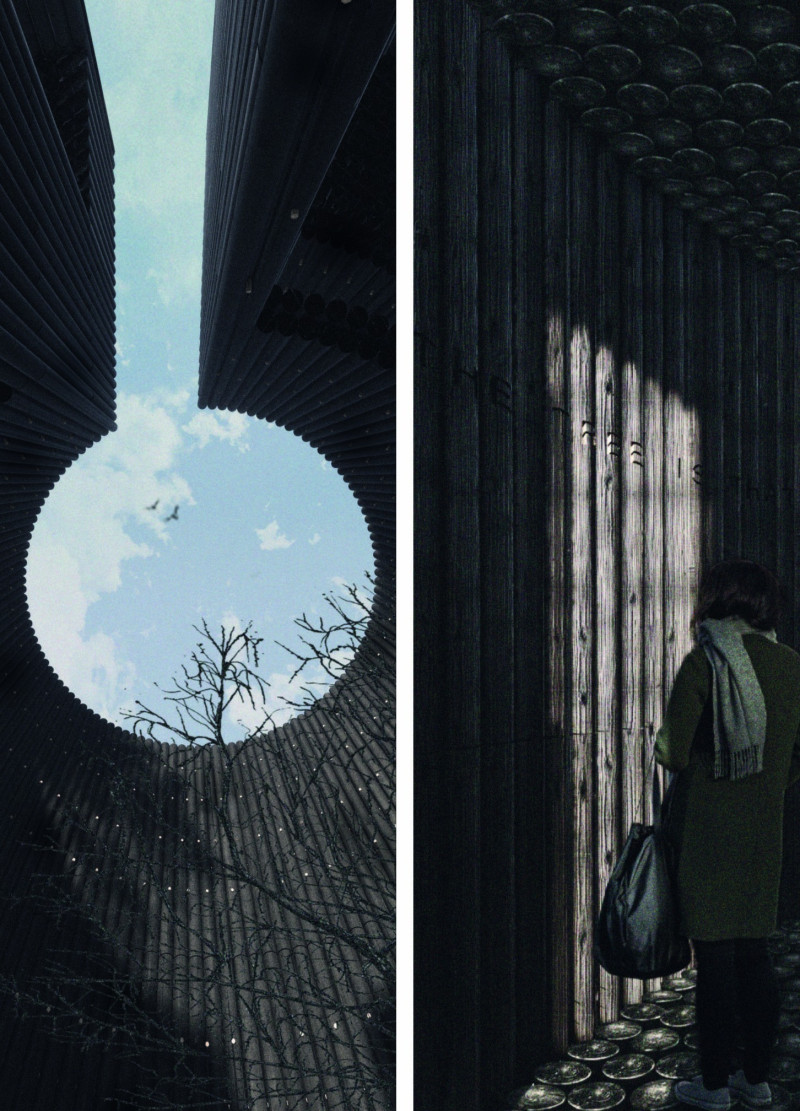5 key facts about this project
The architectural design emphasizes sustainability, employing a careful selection of materials that honors the environment. It features vertical wooden slats that create an outer shell reminiscent of tree bark, allowing for natural light to filter through while maintaining a connection to the surrounding landscape. The use of skylights further enhances this interaction by introducing daylight into the space and providing views of the sky, which enhances the user experience within the pavilion.
Unique Design Approaches
The Trunk Pavilion’s circular form plays a crucial role in its distinctiveness. This shape not only symbolizes the concentric growth of trees but also serves as a practical layout that can accommodate various activities. The interior is organized into several zones for gathering, workshops, and solitary reflection, promoting a range of interactions within the space.
The choice of materials further sets this project apart from traditional architecture. Specifically, the use of dendro, softwood for structural supports, hardwood for flooring, and bark as a textural element on the exterior creates a dialogue with nature. Such materials allow the pavilion to be a living example of sustainability, contributing to carbon sequestration and biodiversity education.
Integration with Nature
An essential component of the pavilion is its commitment to merging architecture with ecological awareness. The design not only serves functional purposes but also facilitates a deeper understanding of local ecosystems. The pavilion’s structure is designed to function as a carbon sanctuary, emphasizing the role of trees in sequestering carbon and promoting biodiversity through educational initiatives. This transformative approach to design creates a meaningful engagement between architecture and environmental stewardship.
For a detailed exploration of the Trunk Pavilion, including architectural plans, sections, and deeper insights into the architectural designs and ideas, please consider reviewing the project's presentation. This analysis reflects the architectural significance and unique characteristics of the pavilion, paving the way for insightful discussions on innovative design within ecological contexts.























